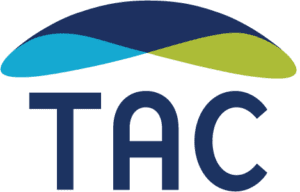Just shy of nine months ago, I left the behavioral health crisis workforce because I was “burned out.” Being awakened at all hours of the night to troubleshoot temporary solutions for systemic barriers — providing grief response to a family whose whole world had been torn apart by senseless gun violence — supporting an individual who felt chronically hopeless as they voiced, for the first time, years of trauma… all these experiences, together with the ongoing stress of running from one chaotic situation to another, had finally brought me to this point. Yet despite my extensive training and practice in understanding trauma, it was several more months until I realized the magnitude of the toll that years of vicarious trauma had taken on me personally.
Unfortunately, my story is not uncommon. Frontline behavioral health staff offer support and instill hope as they walk alongside individuals navigating some of their most challenging life experiences. These services are in demand, but behavioral health care providers are paid significantly less than other health care professionals. Large caseloads with high acuity, low wages, and administrative burdens [PDF] compound workforce burnout and lead to high turnover, which in turn intensifies the challenges faced by an organization’s remaining or incoming staff. The COVID-19 pandemic triggered a significant increase in the need for qualified behavioral health professionals even as it exacerbated an existing health care workforce shortage. Due to understaffing, people with behavioral health needs are having difficulty obtaining adequate and timely care; lack of access to these upstream services perpetuates the need for crisis response staff.
Now is the Time to Invest in the Behavioral Health Care Workforce
State planning for the implementation of 988, which will function as the new national suicide prevention and mental health crisis hotline, is creating momentum to broadly reimagine behavioral health crisis response. In tandem with this project, many states are taking advantage of the new Medicaid provisions [PDF] under the American Rescue Plan Act (ARPA) to expand mobile crisis services capacity to meet the anticipated increase in call volume once 988 is fully launched. The need for a trauma-informed crisis response system is critical, as daily news cycles illuminate the detrimental impacts of an ineffective response to behavioral health emergencies. Workforce shortages threaten to obstruct the ability to provide successful, trauma-informed responses.
Fortunately, initiatives to address the broader behavioral health workforce shortage and poor staff retention are fully underway at the local, state, and national levels, boosted by unprecedented federal financial investments:
- ARPA authorized a temporary enhanced federal matching rate for Medicaid Home and Community Based Services (HCBS) [PDF] which allows the one-time funds to be utilized for workforce development. States have taken various approaches to utilize these funds to support recruitment and retention. Connecticut [PDF] committed to evaluating and raising rates for behavioral health providers, while numerous states provided bonuses to direct care workers. In addition to one-time payments, Iowa [PDF] enhanced its provider training platform and offered financial support for trainings and certifications. As well as offering premium pay incentives, Michigan [PDF] expanded loan forgiveness to providers who commit to working in the children’s behavioral health system in areas where there is a shortage. Ohio [PDF] allocated half of its total HCBS funds to direct worker payments, and roughly another 25 percent to supporting an interagency workforce strategic initiative.
- In 2021, The U.S. Department of Health and Human Services invested $103 million to address burnout in the health care workforce and $29 million to help health care organizations promote an environment of wellness that supports mental health and resiliency for employees.
- President Biden announced a national plan to strengthen the behavioral health workforce by bolstering behavioral health workforce creation; implementing national peer certification; and investing in efforts to promote retention and address burnout.
The onus is on states and localities to fully promote trauma-informed systems, as organizations cannot provide truly trauma-informed care without the necessary staffing capacity and training, including the capacity to address vicarious trauma.
In addition to investing in financial incentives, states are exploring innovative strategies to strengthen recruitment and retention.
- Virginia [PDF] is pursuing avenues to create intrastate reciprocity for behavioral health licensure (i.e., social work, psychiatry, nurse practitioner), as it often takes months for a given professional to receive endorsement from another state.
- Investments in telehealth, coupled with Medicaid reimbursement for behavioral telehealth specifically, can help mitigate the uneven geographical distribution of behavioral health providers. Using telehealth to increase access to care, particularly in remote areas, can alleviate some direct provider strain. Moreover, telehealth has been proven effective in enhancing clinical supervision [PDF] for direct care providers.
- Oregon has made significant legislative moves, including investing $80 million in recruitment strategies to promote diversity and mandated a comprehensive study [PDF] to provide the state legislature with recommendations regarding workforce retention.
Self-Care is Not Enough
Since joining TAC, I have supported providers in adopting supervision strategies and proactive techniques to help prevent burnout. A multifaceted approach is necessary to address the vicarious trauma that direct care providers experience, with an intentional focus on enhancing systems of support. As a former community crisis response manager, I know that improving workforce welfare starts with leadership. Retention efforts locally should support consistency in policies and procedures such as:
- Uniform orientation processes, including comprehensive training and shadowing of veteran staff, to increase staff’s sense of belonging and connection to the agency’s mission.
- A strong commitment to protect supervision time; anyone who has worked as a clinician in the field can tell you that the time commitment to dependable supervision is the first thing sacrificed — sometimes inadvertently — when an agency is short-staffed.
- Protocols requiring team briefs after critical incidents and evaluation of strategies to mitigate future situations.
- Evidence-based practices in evaluating and mitigating compassion fatigue.
- Individualized self-care plans for all staff, with mindfulness encouraged throughout the day.
- Effective on-call systems, with financial incentives, to honor work/life boundaries.
- Regular “brown bag” discussions for managers and direct care staff.
Without systemic implementation to support it, “self-care” is just a trite phrase, not a meaningful practice. Creating supportive environments for the resilient and competent behavioral health care workforce we need will require a shift in the culture — locally, by states, and at the federal level. Timing is critical, as investing in the health of frontline workers is essential to ensure there is an adequate and appropriate response when callers dial 988.



